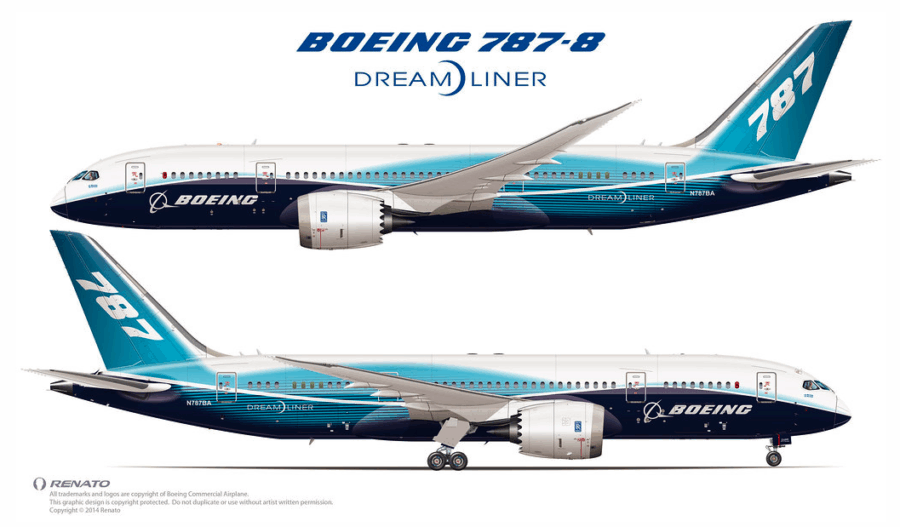How Long Does a Boeing Plane Stay in Service Before Retirement?

The Canadian charter carrier Nolinor Aviation operates one of the world’s oldest Boeing fleets, with 737s averaging an impressive 44.4 years in age. While this makes for an interesting headline, Nolinor is an exception rather than the rule. Most Boeing aircraft are retired long before reaching such a milestone. To understand why, it’s essential to look at how aircraft age, how they are maintained, and what ultimately determines when they’re retired from service.
When discussing aircraft lifespan, it’s not simply about the number of years in the sky. The true measure of an airplane’s age is its flight cycles (takeoffs and landings) and flight hours (time spent in the air). Each flight cycle involves pressurizing and depressurizing the cabin, which puts stress on the fuselage and other structural components. Narrow-body jets like the Boeing 737 accumulate these cycles much faster than long-haul widebodies such as the 777 or 787, which typically complete fewer takeoff and landing events per year.
According to Boeing’s retirement data, the average commercial aircraft is withdrawn from passenger service after around 26 years. However, the range varies significantly—from as few as five years for some aircraft to more than 50 for others. Narrow-body models are generally retired earlier, often after about 50,000 flight cycles, while widebodies can remain in service longer, with 25,000 to 45,000 cycles being typical. The deciding factor, in most cases, isn’t structural fatigue but economics—whether the aircraft remains profitable to operate compared with newer, more fuel-efficient models.
The chart of estimated lifespan metrics for selected Boeing commercial aircraft types. These figures are approximate and should be treated as general guidance rather than precise retirement thresholds.
| Aircraft Type | Approximate Lifespan (Years) | Approximate Flight Cycles / Hours* | Notes / Source |
|---|---|---|---|
| 737 | ~20 – 30 years typical for withdrawal from passenger service. | Up to ~90,000 cycles or ~55,000 flight hours cited for some 737 series. | Some 737 variants were originally designed for ~75,000 cycles or more. |
| 757 | Similar to narrow-body range, often ~25 years or less depending on market economics. | Specific cycle/hours data less frequently published | Retirement often driven by economics rather than structural life. |
| 767 | Possibly 25 – 35 years (or more in freighter/secondary service) | Not widely published in accessible sources for exact cycle/hours | The 767’s continuing use in freighter and converted roles extends service life beyond typical passenger use. |
| 777 | Potentially 30 + years — “many decades” for safe operation. | Example: ~700 cycles/year average for 777. | The wide-body long-haul usage leads to fewer cycles per year (vs narrow-bodies) so structural life may be extended. |
| 787 | Design life cited up to ~30 years before enhanced maintenance; full service life could extend to ~50 years in optimal conditions. | Boeing cited design life of ~44,000 cycles for the 787 family. | Composites-based structure and newer design may shift typical lifespan compared with older aluminium-airframe models. |
- Narrow-bodies like the 737/757 often see retirements after ~20-30 years or when cycle/hours thresholds are reached.
- Medium/large wide-bodies like the 767/777 often operate longer, thanks to lower cycle loads and long-haul usage.
- Newer models like the 787 have design lives that may extend to perhaps ~30–50 years under favorable conditions.
- The real lifespan of any given aircraft depends heavily on how it’s used, how many flight cycles/hours it accumulates, how well it’s maintained, and whether it remains economically viable.
Maintenance plays a critical role in extending an aircraft’s lifespan. Every Boeing jet follows a strict maintenance schedule, with inspections growing more detailed over time. The most comprehensive of these is the “D check,” a deep structural inspection that occurs roughly every six to ten years. During a D check, engineers dismantle large sections of the aircraft to examine its internal structure, a process that can take up to 50,000 labor hours. Advanced diagnostic techniques—such as ultrasonic and eddy current testing—help detect even microscopic cracks or corrosion.
In addition to routine maintenance, airlines must comply with Airworthiness Directives and Boeing’s service bulletins, which may require additional checks or repairs as new safety information emerges. The Federal Aviation Administration (FAA) also mandates a Limit of Validity (LOV) for each aircraft type, defining how long its structural data remains valid before further inspection programs must be introduced.
Despite their engineering durability, many airliners are retired before reaching 20 years of service. According to Mark Gregory of Air Salvage International, the average age of scrapped airliners is now about 18 years, with some being dismantled at under a decade old. High fuel costs, changing market needs, and fleet renewal programs all accelerate retirement decisions.
Still, a jet’s end of service doesn’t necessarily mean the end of its usefulness. The aircraft recycling industry has become a billion-dollar sector, recovering engines, materials, and components. Up to 85–99% of a retired aircraft can be recycled, often finding new life as parts for other planes—or even as aluminum beverage cans.
With over 800 aircraft expected to retire in 2025 and more than 1,200 annually by 2050, Boeing’s aging fleet will continue to transform from icons of flight into valuable raw materials and spare parts. Each jet, no matter how long it flies, contributes to the evolving life cycle of commercial aviation—proving that even after their final descent, Boeing aircraft continue to serve the skies in new forms.
Related News: https://airguide.info/?s=boeing
Sources: AirGuide Business airguide.info, bing.com, Simple Flying, Boeing
